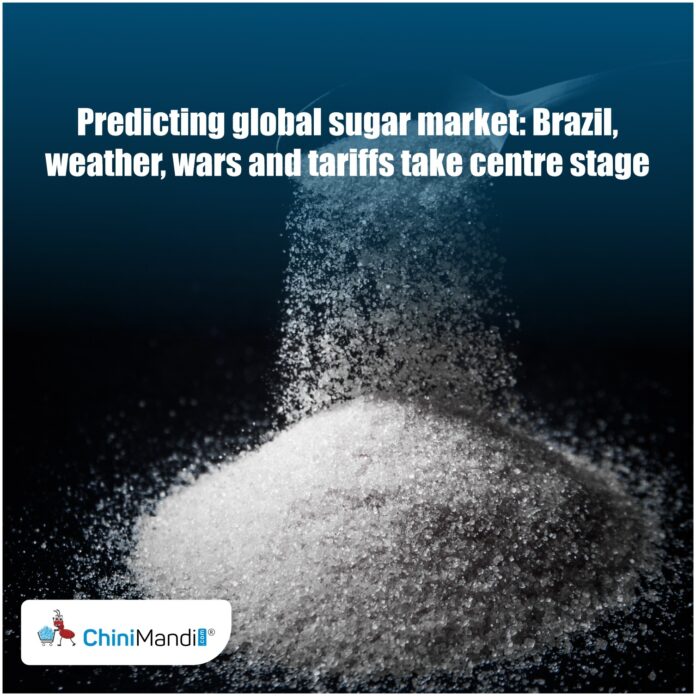The International Sugar Organization (ISO) revised the overall global surplus sugar availability to 1.625 MMT for the 2025/26 season, on the back of higher expected productions in India, Thailand and Pakistan.
World production is estimated at around 182 MMT, up about 5.5 MMT from last season, and the sugar consumption is projected to reach about 180 MMT, up about 1 MMT compared to the previous season.
All eyes on Brazil

Commenting on the ISO estimate, Ale Rosete, Global Trade & Market Intelligence, Gravel DMCC said that the outlook for 2025-26 points to a global surplus, broadly consistent with the ISO’s figure. However, she stated that the surplus remains fragile, which is heavily dependent on Brazil performing well again next season.
“Brazil is now entering the intercrop period, and several key producers are facing higher costs and weather uncertainty. In many regions, current world prices are already below the cost of production, which limits the ability to expand supply. So, I would describe the balance as mildly positive, but not comfortably so”, she said.
Sugar prices projection
Ale feels that the prices will remain range-bound, with limited downside from current levels. “Even though sentiment has turned slightly bearish, several factors provide support, like intercropping, which has commenced in Brazil, reducing nearby availability. Moreover, ethanol is now paying better than sugar export, which could redirect part of the balance. Sugar prices are below the cost of production in many countries, restricting supply growth,” she stated.
Indian sugar in global scenario
Ale said that the recent approval of around 1.5 million tons of sugar exports signals a cautious re-entry by India, but the impact may be limited.
“In the previous season 2024-25, which concluded in September, the Government had approved around 1 million tons of sugar export, yet not all the volume was physically exported. So even with the new quota, actual exports may fall short, and the Government’s focus clearly remains on maintaining internal balance and ethanol targets”.
The big picture: US tariffs and war

Diogo Ribeiro, market analyst and economic diplomacy author, explains the bigger picture, which is likely to have a wider impact across all the industries, mainly due to the tariff changes undertaken by the Trump administration in the US and ongoing political tension across several countries.
“Industries, food businesses and transport energies might all get affected in the coming months due to the new regime of USA tariffs, which change the movement of commodities, offers and demands”.
Black swan events: Hedging as protection
Ribeiro said that the volatile geo-political situation, especially with regard to Ukraine and Russia, continues to have a strong impact on businesses. “Politics also changes it because country managers sometimes can make mistakes and BRICS have importance in those relations, offer and production, too. Hedging and new markets are safeguards against unexpected variations in business, or black swan events!”
He said that climate change and fires, which we have been seeing quite often now, are also impacting plantations in various countries, which threaten to impact production and hence might change overall trade and price dynamics.



















[…] Source : Chinimandi […]